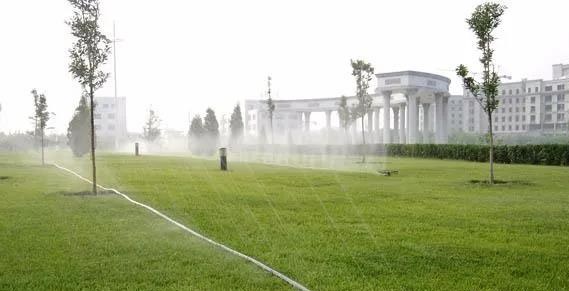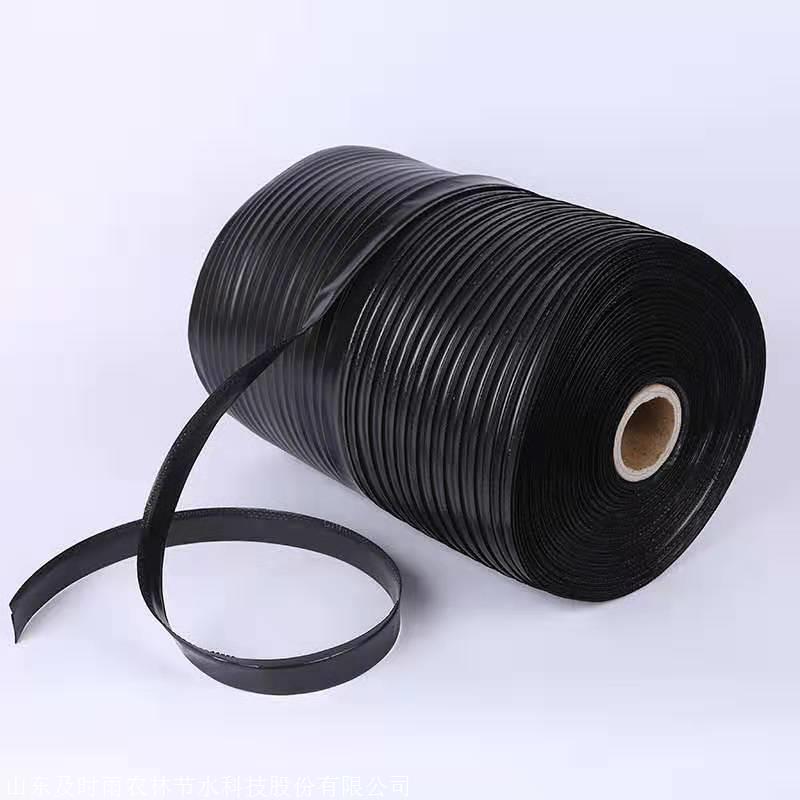I. Introduction
Drip irrigation is one of the most water-saving irrigation technologies used in nurseries to date. However, due to its higher cost, it was once dubbed as “expensive technology.” In recent years, with the widespread application of drip tapes, this “expensive technology” is no longer costly, and its application has become universal in various fields.
II. Differences Between Micro Sprinkler Tapes and Drip Tapes
- Micro Sprinkler Tapes: Micro sprinkler tapes are irrigation products that use mechanical or laser punching directly on belt-shaped plastic hoses for irrigation. The diameters range from 25mm to 120mm, and they can be made into slanted three-hole, slanted five-hole, slanted seven-hole, or slanted nine-hole tapes. These tapes have internal punching, making them less prone to clogging. They find wide applications in field crops, greenhouse vegetables, flower nurseries, etc. Micro sprinkler tapes, also known as porous pipes or micro sprinkler irrigation pipes, feature small holes formed directly on compressible plastic hoses using mechanical or laser processing, facilitating drip or micro-sprinkler irrigation for water-saving irrigation.
Micro sprinkler tapes, when laid directly on the ground with groups of three, five, or more water outlets, produce a micro-sprinkler effect similar to fine rain.
When laid under mulch, the single or double water outlet groups of micro sprinkler tapes can achieve drip irrigation under the cover of the mulch.
Commonly used fittings for micro sprinkler tapes include side-by-side fittings, straight-through fittings, external thread four-way fittings, and three-way fittings.
- Drip Tapes: Drip tapes are commonly used water-saving irrigation devices in arid areas, with water utilization rates reaching up to 95%. Compared to flood irrigation, drip irrigation has the advantage of water saving.
Drip tapes are widely used in greenhouse sheds and the irrigation of field economic crops. Labyrinth-style drip tapes utilize a one-time vacuum integral hot pressing technology for labyrinth flow channels and drip holes, ensuring good adhesion and high manufacturing precision. They are extensively used in the irrigation of field crops such as fields, greenhouses, fruit trees, flowers, vegetables, cotton, corn, and wheat, offering professional equipment for water-saving, energy-saving, and yield-increasing measures.

III. Forms of Drip Tapes
Drip tapes are plastic products that use plastic pipes to deliver water (liquid fertilizers or pesticides, etc.) through holes or emitters with a diameter of approximately 16mm on a microtube to the roots of crops for localized irrigation.
Drip tapes mainly come in two forms: lateral labyrinth drip tapes and embedded emitter drip tapes.
IV. Conditions Suitable for Drip Tapes:
- Drip tapes are suitable for planting in greenhouses and sheds to reduce pests and diseases, save fertilizers and pesticides, and improve economic benefits.
- They are suitable for orchard irrigation, effectively increasing yield, improving fruit quality, and controlling weed growth.
- Drip tapes are suitable for various field crops such as cotton, medicinal herbs, watermelons, and field vegetables, enhancing mechanized planting efforts.



